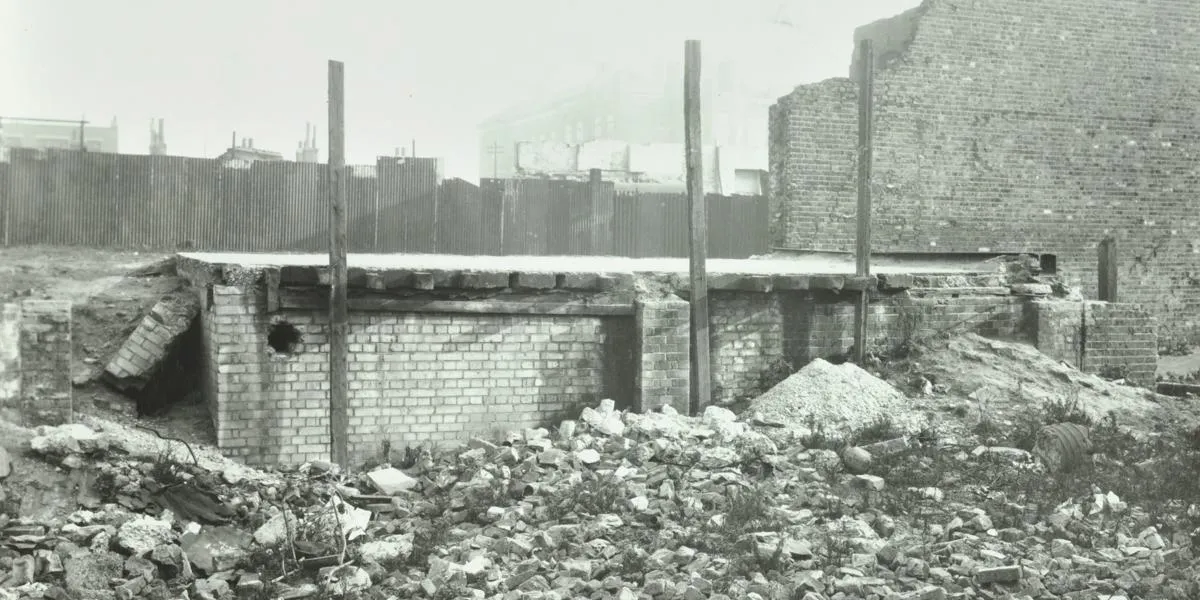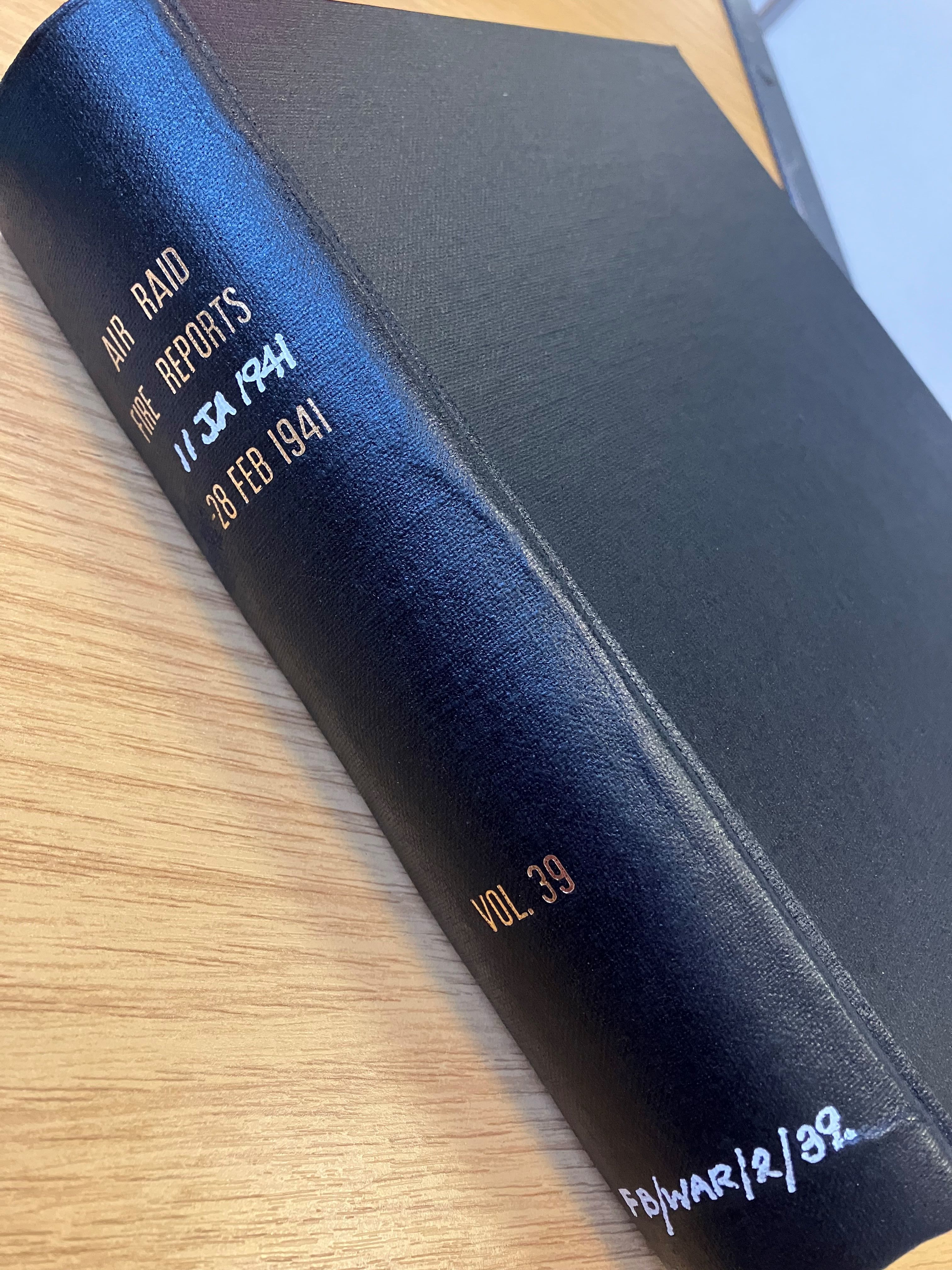Recording the war: air raid report books

The London Archives holds various documents that give details of when air raid incidents occurred. The largest series of records is the London County Council (LCC) air raid fire report books (LCC/FB/WAR/02), compiled by the fire brigade, which was part of the LCC at this date. These are split over 65 chronological volumes.

What information can I find?
Researchers frequently want to find out whether specific properties or areas were damaged in air raids during the Second World War, and in which raid the damage took place. Pinning down a date of damage has always been a much harder task unless you had a good idea of when the incident took place.
The volumes start in May 1940, prior to the official beginning of the Blitz, at a time when London was subject to small “nuisance” raids. They continue through to the end of March 1945, so cover the V1 and V2 rockets which hit London in the last years of the war. As far as we are aware, their coverage means that they are a unique source, covering a longer period than the bomb census held at The National Archives (which can be found on the Bombsight.org website).
Discover the bomb damage mapsThe registers tell us where an incident took place and the names and occupations of householders or the owners of business premises. They give a brief description of the nature and extent of any damage. They also record injuries and casualties.

Indexing the Air Raid Report books
In 2010, we decided to index all 65 volumes into a database which could be searched by location, to make it much easier to find when specific incidents took place. Currently 60 of the 65 volumes have been fully indexed. So far, the index contains over 40,000 entries.
How do I access the index?
The index will be available to view in the Mediatheque in the Information Area at The London Archives without an appointment from 24 February 2025.
What is recorded?
The information recorded in the index includes the date and time of the incident; address and modern London borough; the name of the occupier or business if known and the type of property or type of business; a brief description of the damage and its supposed cause, as well as details of any casualties.
Descriptions of damage can vary from area to area. Sometimes a lot is recorded, such as details of which part of a building was affected or a description of the size of the property. However, the level of description is often minimal – particularly during periods of heavy bombing. The fire brigade used four main classifications of damage:
- demolished
- severely damaged
- damaged
- slightly damaged
Can I consult the original volumes?
Yes. Visitors are welcome to order these from our strongrooms in the normal way.
Register for a History CardA note on geographical coverage
Up to August 1941, the volumes only cover the London County Council area and are sub-divided into 6 main divisions (A-F) the breakdown of which is roughly listed below:
- Division A covered Westminster, Kensington & Chelsea and Hammersmith and Fulham
- Division B covered the City of London, Camden and Islington
- Division C covered Tower Hamlets and Hackney
- Division D covered Lewisham, Greenwich and a small part of Southwark
- Division E covered Wandsworth and most of Lambeth
- Division F covered the vast majority of Southwark and a small part of Lambeth
On 18 August 1941 the Fire Service was nationalised and after this date, the area that is covered by these volumes is greatly expanded. The new boundary covered an area similar to that within the present M25 motorway.
Given the above information, there are many parts of London that may not be covered at a certain date. The boroughs of Bexley and Bromley (formerly Kent), Croydon, Kingston upon Thames, Merton, Richmond upon Thames and Sutton (formerly Surrey), Barking & Dagenham, Havering, Newham, Redbridge and Waltham Forest (formerly Essex) which are all considered to be part of Greater London, will only be covered after August 1941 and nothing will be held for these areas prior to that date.
For the boroughs that were formerly part of the County of Middlesex namely Barnet, Brent, Ealing, Enfield, Haringey, Harrow, Hounslow and Hillingdon these will of course be covered post August 1941. However, for the period prior to August 1941, there is a separate series of air raid log books found within the records of the Middlesex County Council (MCC/CD/WAR/01). We plan to index these once all 65 volumes of the LCC series are complete.
Explore the exhibition